Can Microcurrent Help Hair Growth?Exploring New Technologies for Scalp Care
As life becomes increasingly fast-paced and stressful, hair loss is becoming a growing concern, especially among younger generations. Studies show that more and more young people are facing issues like receding hairlines and thinning hair. Traditional treatments such as hair transplants are invasive, expensive, and require a lengthy recovery period. Meanwhile, FDA-approved medications like Minoxidil and Finasteride, though effective, come with notable side effects such as reduced libido, blood pressure issues, and potential risks for fetal development.
In this context, the need for a non-invasive, side-effect-free, and sustainable solution for hair health has never been more urgent. This is why microcurrent stimulation technology has gained attention as an alternative or complementary option for hair growth.
Table of Contents
1. Introduction: Can Microcurrent Help Hair Growth?
2. What is Microcurrent and How Does It Work for Scalp Care?
3. Why Does Your Hair Grow Slowly or Fall Out Quickly?
4. The Hair Growth Cycle Explained
5. How Does Microcurrent Promote Hair Growth?
6. Proven Results: Microcurrent Activation of Hair Follicles
7. Red Light Therapy for Hair Loss: A Powerful Combination
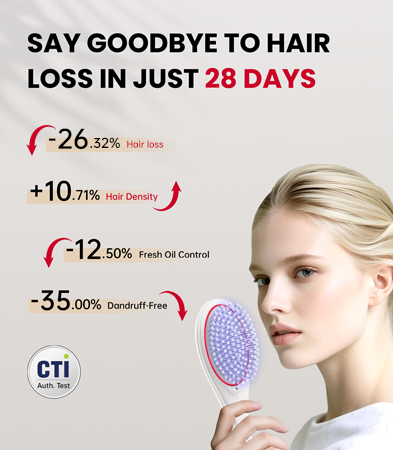
Microcurrent: An Emerging Electrical Stimulation Technology for Scalp Care
Microcurrent refers to an extremely weak electrical current that mimics the body’s natural bioelectricity, which has been shown to have gentle yet profound effects on cellular activity. Over recent years, more and more in vitro cell models and animal experiments have proven that microcurrent stimulation can effectively activate dermal papilla cells (DPCs) in the hair follicles, promoting hair follicle function recovery and hair regeneration. As a result, microcurrent has become a widely recognized non-invasive solution for hair growth.
As a professional manufacturer of home-use beauty devices, ACE-TEC has incorporated microcurrent stimulation technology into its scalp care solutions, continually optimizing the parameters and device structures based on our experimental platforms. We aim to create a safer, more comfortable, and effective hair growth solution for consumers.
Why Does Your Hair Grow Slowly or Fall Out Quickly? – Understanding the Nature of Hair
The Mechanism of Hair Formation
The nutrients we consume are absorbed in the digestive system and broken down into amino acids, fatty acids, and other small molecules. These nutrients are then transported through the bloodstream into the dermal papilla cells (DPCs) of the hair follicles, where they are synthesized into proteins that form new cells. These cells die naturally and undergo keratinization to eventually become visible hair strands.
The Structure of Hair
Hair consists of two main parts:
· Hair Root: This includes the hair follicle, dermal papilla, sebaceous glands, sweat glands, nerve endings, arrector pili muscles, and hair matrix cells. It serves as the “engine” for hair generation.
· Hair Shaft: The part of the hair we see and touch, composed of layers of keratinized proteins.
The structure of the hair follicle determines the thickness, color, and type of hair (straight or curly). Dermal papilla cells (DPCs), located at the base of the hair follicle, are the “control center” for regulating the hair growth cycle.
What Determines How Long Your Hair Can Grow?
Your hair goes through three key phases in its life cycle:
· Anagen Phase (2-7 years): During this phase, hair grows rapidly, becoming thicker, with hair follicles receiving ample nourishment.
· Catagen Phase (2-3 weeks): Hair stops growing, cellular activity decreases, and hair follicles begin to shrink.
· Telogen Phase (3-4 months): Old hair gradually falls out, while new hair starts to grow.
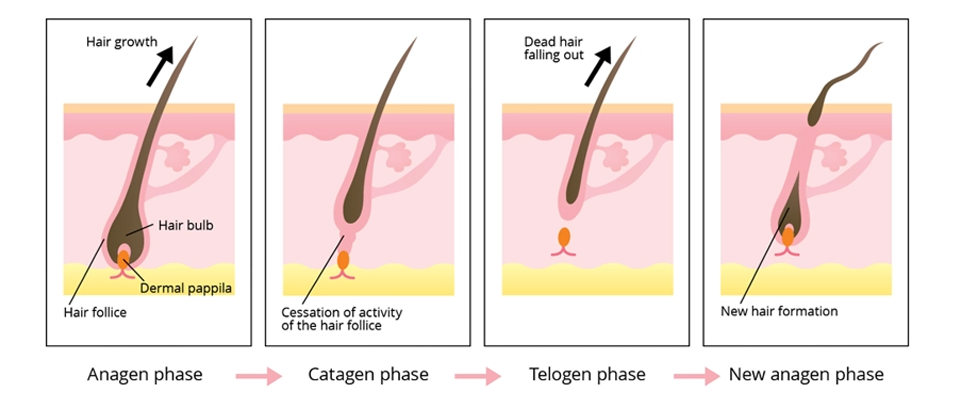
However, hair follicles do not all go through these phases at the same time, which is why we don’t experience total hair loss overnight. As we age, however, many hair follicles gradually shrink and cease to enter new growth cycles, resulting in thinner hair and receding hairlines.
Therefore, the key to improving hair health is to extend the anagen phase of hair follicles and delay the premature onset of the telogen phase.
How Does Microcurrent Promote Hair Growth?
From a cellular perspective, microcurrent’s impact on hair growth primarily involves the following mechanisms:
1. Activating Dermal Papilla Cells (DPCs)
Studies have shown that microcurrent stimulation significantly accelerates the proliferation of DPCs, promoting their differentiation and delaying apoptosis, thus activating the “hair generation factory” at the root.
2. Regulating Growth Factor Secretion
Microcurrent can activate the PI3K and Ca²⁺ signaling pathways to modulate the expression of several key growth factors, enhancing follicle activity and supporting hair growth. These include:
· IGF-1 (Insulin-like Growth Factor 1): Promotes the proliferation of follicle cells and extends the anagen (growth) phase, helping hair grow thicker and stronger.
· VEGF (Vascular Endothelial Growth Factor): Stimulates the formation of microvessels in the scalp, improving blood circulation around the follicles and delivering essential oxygen and nutrients.
· FGF (Fibroblast Growth Factor): Activates hair follicle stem cells and improves follicle structure, helping initiate a new hair growth cycle.
By stimulating these growth factors, microcurrent technology supports a healthier scalp environment, laying the foundation for stronger, fuller hair.
3. Improving Blood Circulation and Nutrient Absorption
Microcurrent can stimulate the dilation of blood capillaries, increasing local blood flow and delivering more oxygen and nutrients to the hair follicles, which improves their growth environment.
4. Enhancing Cellular Energy Synthesis
Research indicates that microcurrent improves ATP synthesis in cells, providing additional energy for hair follicle cells and enhancing their repair and regeneration capabilities.
Proven Results: Microcurrent Activation of Hair Follicles
Backed by years of research and development in beauty technology, ACE-TEC’s research team has conducted numerous cell and animal studies to verify the positive effects of microcurrent on follicular activity and the hair growth cycle:
✓ Cell Experiments: Activating Dermal Papilla Cells (DPCs)
· Microcurrent stimulation significantly promotes the growth and proliferation of DPCs
· Extends the growth phase of DPCs, reduces apoptosis, and enhances follicular vitality
· Activates various signaling pathways, including PI3K/Akt and Ca²⁺
✓ Animal Studies: Accelerating Hair Follicles’ Transition from Telogen to Anagen
· Mice treated with microcurrent showed increased hair follicle density, thicker skin tissue, and more melanin production
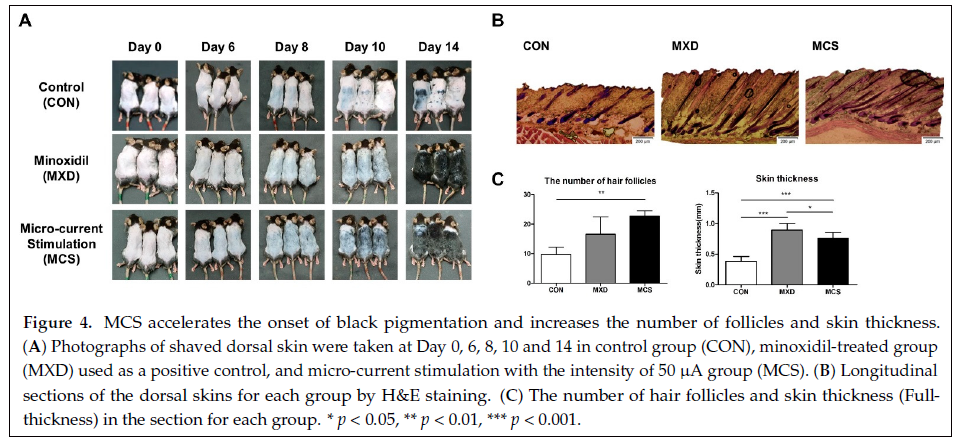
· Higher expression of growth factors such as VEGF, IGF-1, and FGF promoted follicular activation
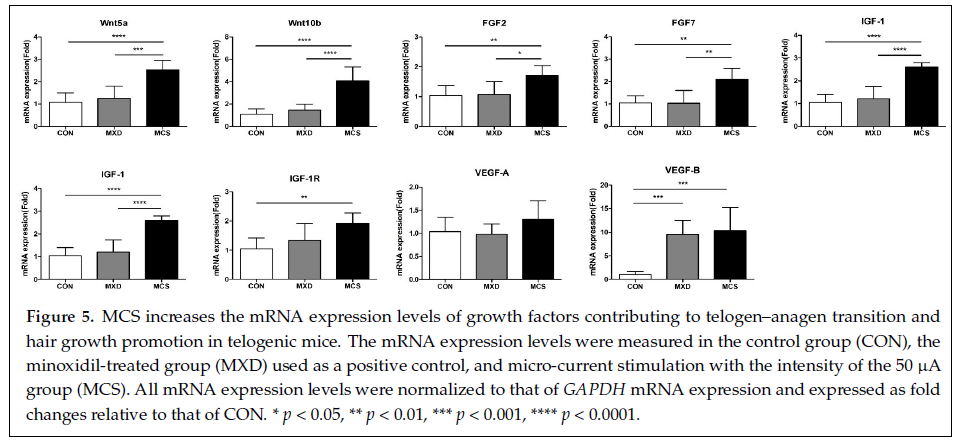
Red Light Therapy for Hair Loss: A Powerful Combination with Microcurrent
Red light therapy, typically in the 630-670nm wavelength, has been widely applied in medical aesthetics. Studies have shown that it:
· Activates mitochondria and increases cellular energy production.
· Stimulates microcirculation, enhancing scalp oxygenation.
· Promotes collagen synthesis, improving the scalp environment.
Therefore, microcurrent + red light therapy creates a synergistic, scientifically-backed solution for hair growth that is non-invasive and has no side effects.
The Best Scalp Massager for Hair Growth? Try This Three-in-One Cutting-Edge Product
ACE-TEC Microcurrent Red Light Scalp Massager Brush
The Microcurrent Scalp Massager integrates three advanced technologies to provide comprehensive scalp care:
✓ Microcurrent Activation
Gently stimulates the hair follicles to promote growth by improving scalp microcirculation and energizing dermal papilla cells.
✓ Red Light Therapy
LED red light penetrates deeply into the follicular layer to repair damaged tissues, extend the anagen phase, and combat hair loss.
✓ Negative Ion Therapy
Neutralizes static, reduces tangling, and improves hair texture and smoothness.
Additionally, the device is ergonomically designed for easy, wireless use, making it an ideal daily tool for scalp care and hair growth.
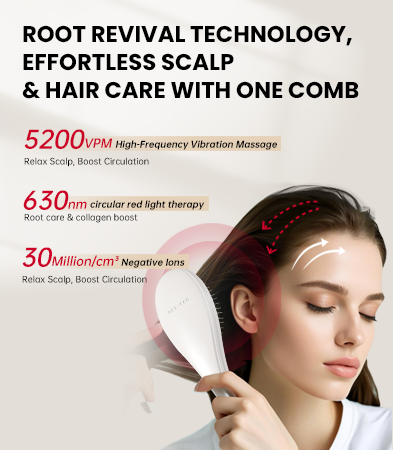
Final Thoughts: Microcurrent Isn’t a “Miracle Cure,” but It Could Be a Catalyst for Your Hair’s Health
While the causes of hair loss vary from person to person, activating hair follicle vitality and restoring balance to the hair growth cycle is a scientifically-backed path to improvement. Microcurrent, as a non-invasive, low-side-effect technology, is increasingly being integrated into scalp care devices for its potential to support hair regeneration and prevent hair thinning.
If you’re looking for an innovative hair growth solution that combines science, safety, and effectiveness, consider ACE-TEC’s red light therapy brush. We offer flexible customization options for formulas, structures, and designs, ensuring that our products meet the specific needs of the market.
For commercial packages, test reports, or product samples, feel free to reach out.
 Beauty Device Manufacturer | Beauty Device Supplier - Ace-tec
Beauty Device Manufacturer | Beauty Device Supplier - Ace-tec

HelloPlease log in